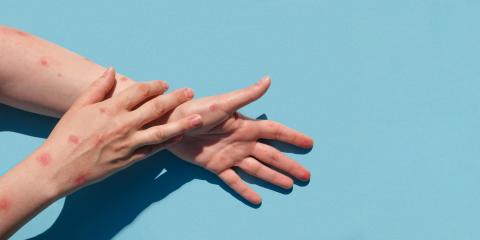Reaction to the study published in 'The Lancet' analysing cases of monkeypox in Spain
A study published today in The Lancet examines the clinical manifestations of monkeypox in 181 patients at three sexual health clinics in Madrid and Barcelona.

Pablo Fernández - Lancet
Pablo Fernández
Dermatologist at the Hospital Ramón y Cajal and Master in Tropical Medicine at the Universidad Autónoma de Madrid, member and one of the spokespersons of the Spanish Academy of Dermatology and Venereology (AEDV) for monkeypox
The study includes 181 cases of monkeypox diagnosed in clinics in Madrid and Barcelona from 11 May to 29 June 2022. It is a quality study supported by solid data.
It presents results that are in line with those published recently in other high impact journals such as the British Journal of Dermatology or the New England Journal of Medicine. It emphasises the presence of skin lesions in the genital and perianal area as initial manifestations; atypical manifestations such as proctitis, oropharyngeal lesions or abscesses. Also in the route of transmission, with close sexual contact being the main route of transmission in this outbreak. Most cases were mild and those requiring specific treatment or admission were for pain control.
Interesting and novel data:
The researchers quantified the viral load of the lesions, where it was observed that the viral load in the skin lesions was much higher than that analysed in the oropharyngeal samples. This data is relevant, as it supports the hypothesis that the direct contact route is the most important and frequent route of transmission in the current outbreak, with the airborne route probably being less effective.
The importance of health professionals being aware of this disease is again emphasised, in view of new profiles of affected patients and less common clinical manifestations.
In addition, the authors suggest that, given the short incubation period, post-exposure vaccination strategies may not be as effective as pre-exposure vaccination targeting the at-risk population.
One of the limitations of the study noted by the researchers was that in one of the centres, oropharyngeal or anal samples were not collected at the onset of symptoms due to logistical issues. It was also not possible to estimate the incubation period in 37 of the cases collected.
Jacob - Lancet
Jacob Lorenzo-Morales
Professor of Parasitology, Director of the University Institute of Tropical Diseases and Public Health of the Canary Islands of the University of La Laguna and CIBERINFEC researcher
"The study collects data from two centres, one in Madrid and one in Barcelona. The data clearly informs what has happened in these cases studied and how the patients have been clearly infected.
It is yet another study that supports what we already know: transmission by skin-to-skin contact over a long period of time and, in the case of the most affected population, during sexual intercourse. It is important not to stigmatise, but to alert this population group because they are the most affected so far. If a health problem is not reported and warned about, it does not exist.
It is a study that has the bias of providing data from centres related to sexually transmitted diseases. However, it is interesting, as it continues to alert and warn that these types of practices are the most dangerous.
Although the headline [of the press release] is a bit alarmist, only three people required hospitalisation. I think it is important to warn MSM instead of stigmatising them and also for health authorities to take prophylactic measures, which in many countries, including ours, are still arriving late and badly".
- Research article
- Peer reviewed
- Observational study
- People


